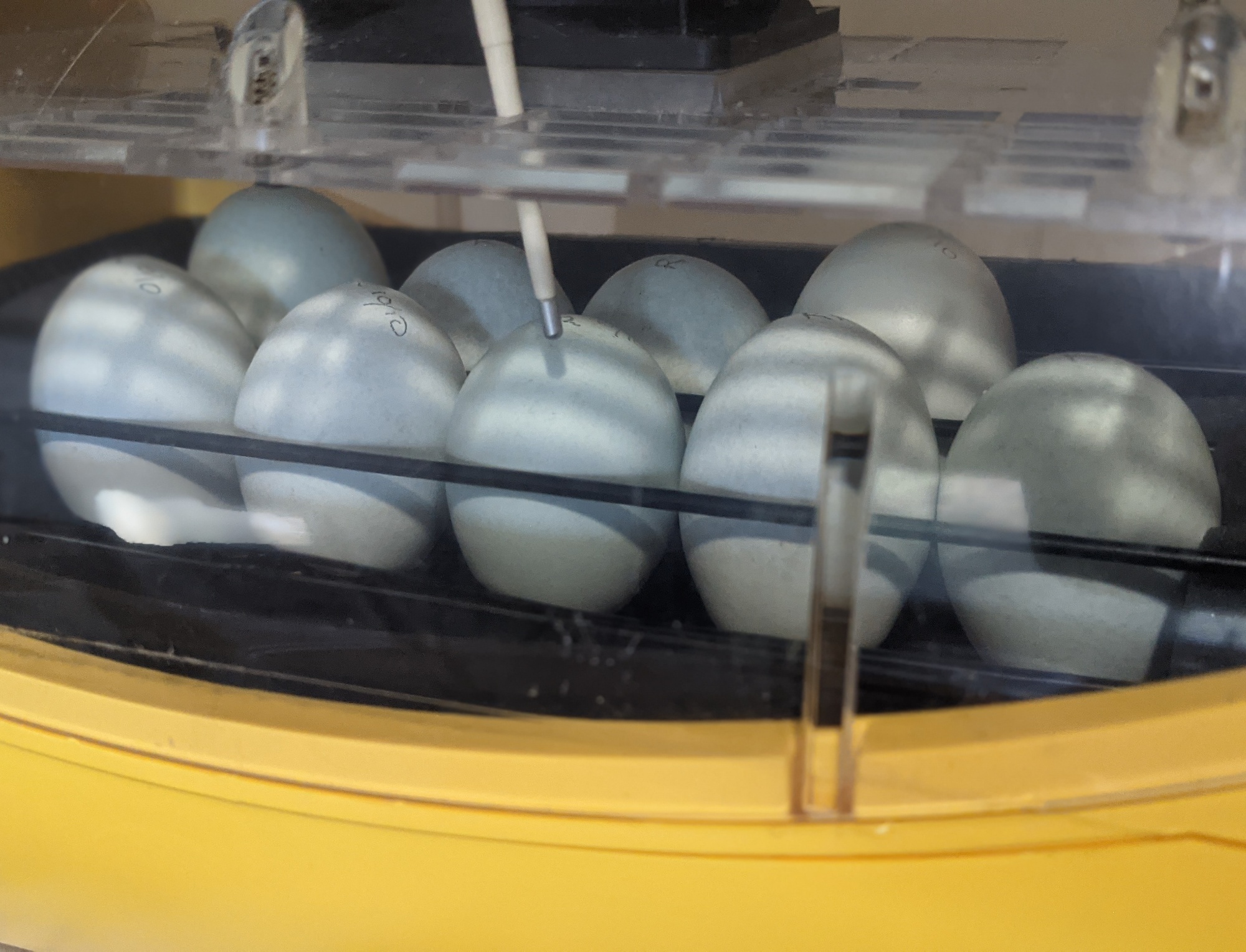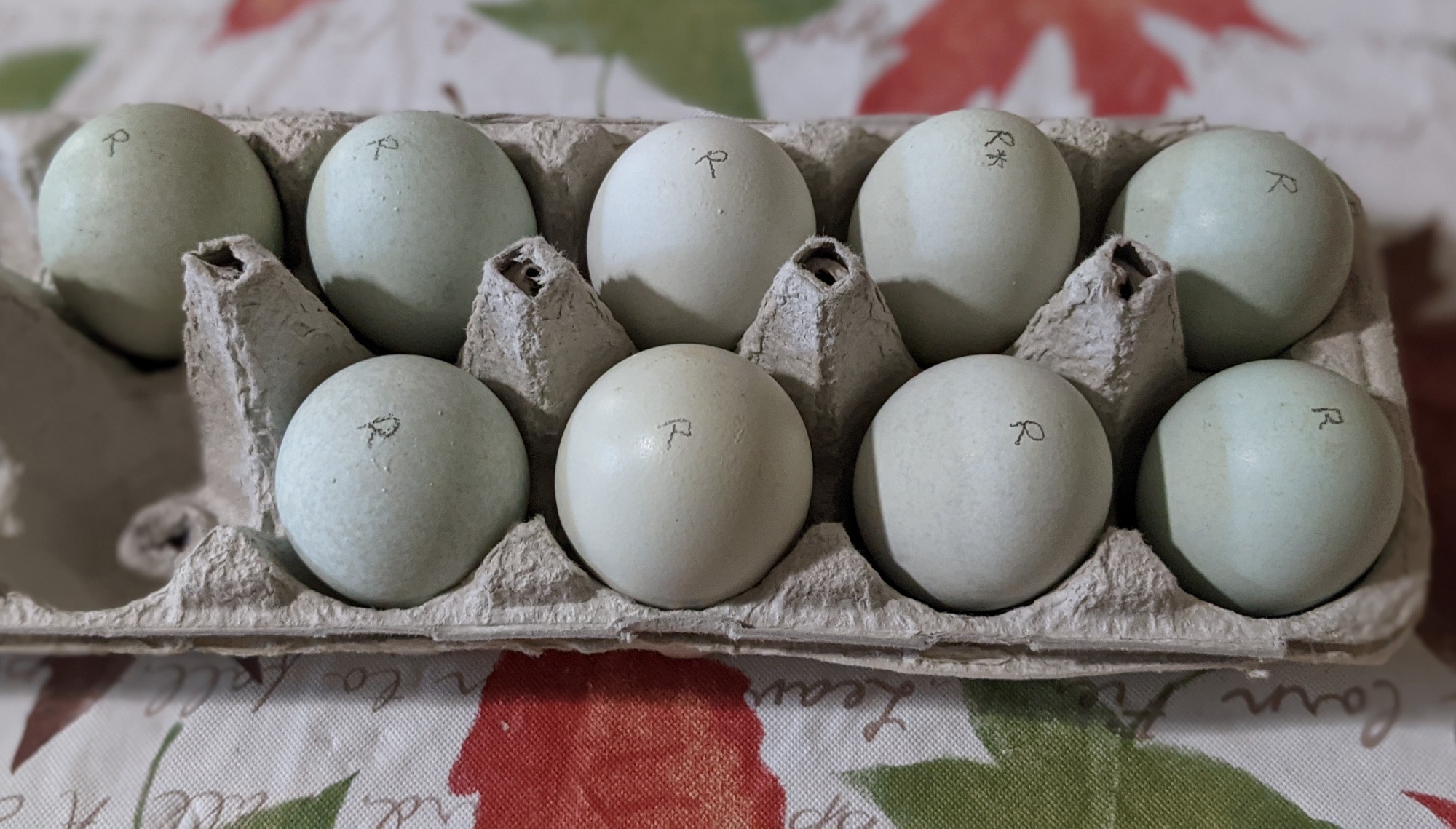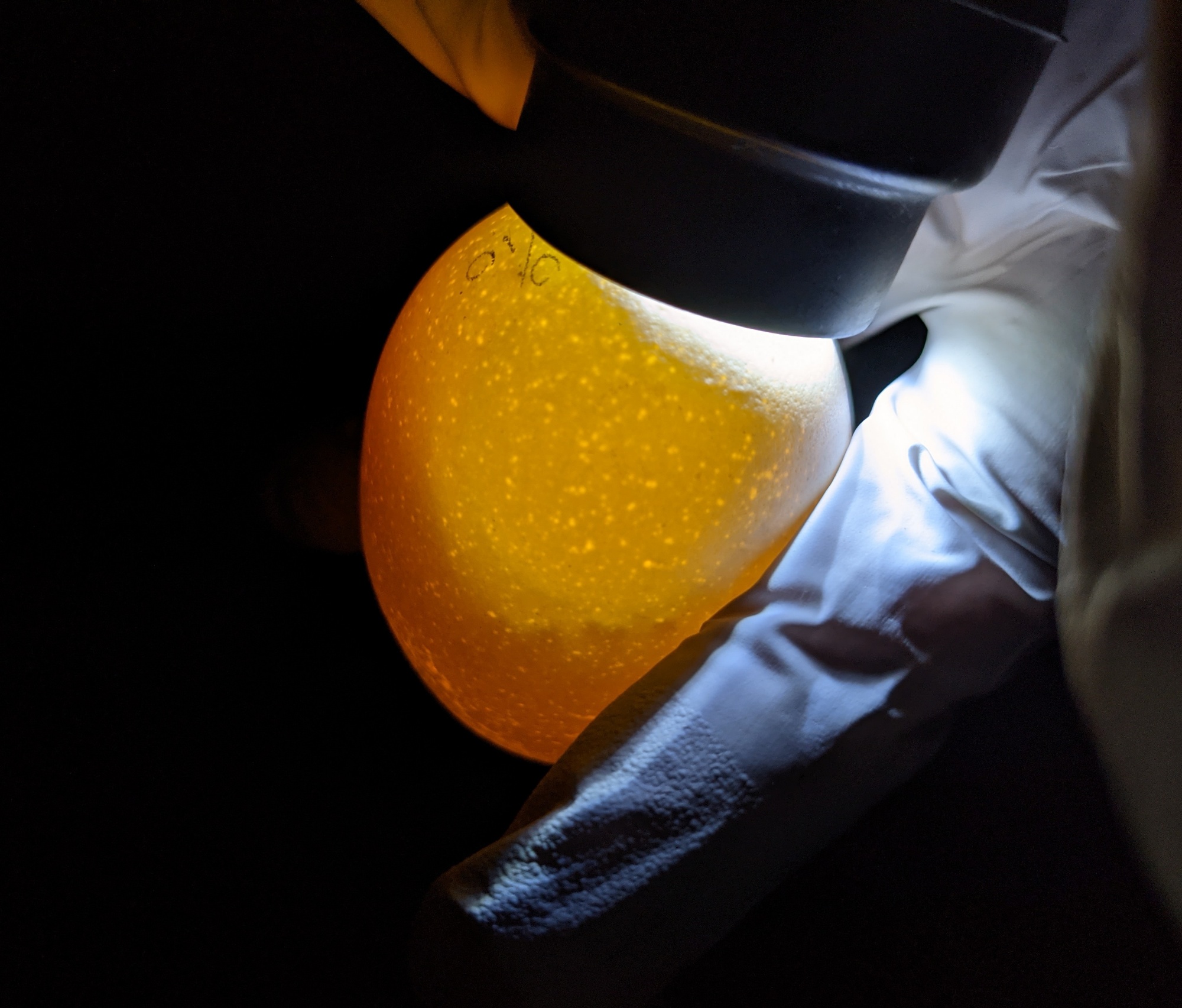
Welcome to my shipped eggs adventure, part 2. After a terrible hatch of shipped Lavender Ameraucana eggs earlier in the season, I was left with a single hatchling…and she’s grown into a beautiful bird with a charming personality. I had to have more! So, ever the glutton for punishment (or perhaps secret optimist?), I purchased more eggs from a different seller, in the hopes that they would eventually become more lovely lavenders.
This time, the breeder was about 570 miles away, in another contiguous state. As I mentioned in my previous post about shipped American Bresse eggs, I’m committed to trying to give these eggs their best chance of hatching, so if I can’t go pick them up, I make a concerted effort to have them shipped from as nearby as possible.
The adventure began innocuously enough: the seller shipped the eggs bright and early the next day. The accepting post office showed that just a couple of hours later, the package left. After that, though, it went downhill: for the next several days, it showed that it was “in transit” (translation: into the void). It was abundantly obvious that the 3-day “estimated” arrival date was simply aspirational, as the days ticked by without updates. As I grew increasingly worried – knowing that the eggs were aging and undergoing additional (probably rough) handling – I could almost feel the chances for hatching success slipping away.
Then – out of the blue – four days after the origin post office accepted the eggs, USPS finally updated the tracking to show that the package had arrived at a regional postal facility…about 300 miles north of the origin. I’m 570 miles almost directly east of the origin!
I think it’s safe to assume* that this inefficient routing was due to an error on USPS (or its shipping partner’s part); magically, the next day, the package was actually in the destination state – which means it was flown. In previous years, I’ve received hatching eggs that had been flown from another state and still had a decent hatch rate, but it’s less than ideal because of the pressure changes and additional handling that are involved. In my experience, flying hatching eggs means that they suffer shipping damage.
So, now, the eggs were several days past their estimated delivery date, and had been subjected to who knows what kind of extra handling. I was prepared for the worst when I picked up the box.
The box itself looked undamaged, but I’ve also learned that external damage is not a reliable indicator of the damage done to the eggs. They were well packed, with ample amounts of shredded paper surrounding bubble wrap pouch-enclosed eggs. As I carefully unwrapped each egg (9 total), I visually inspected it and only saw one egg that caused concern immediately: it had some moisture on it, which caused me to wonder if it had been cracked. I didn’t see any cracks, so it may have just been condensation (also not good). I left it upright in a carton with the others while I attended to farm tasks.

Later, I candled the eggs. This is where the true extent of damage becomes apparent: while there were no cracks, the eggs had suffered severe damage to their air cells and potentially the yolks. What I saw was rolling, detached air cells (definitely not good), along with yolks that seemed misshapen and possibly scrambled.

Because USPS uses so much automation in shipping, boxes like this – even when clearly marked as fragile and containing hatching eggs – are tossed around on conveyor belts and unceremoniously dumped into bins for transport. And this may occur multiple times during a shipment. In addition, the eggs may be subject to temperature and pressure changes, all of which may ultimately have an adverse affect on their viability.
I was disappointed to be looking at eggs that were, overall, as shipping-damaged as the earlier group of Lavender Ameraucana eggs. Nonetheless, I still maintain a small bit of hope…tempered by the reality that these are delayed, misrouted, roughly-handled eggs that may be damaged beyond repair. It’s not looking good.
After 24 hours upright in a carton, the eggs went into a waiting incubator. Due to the extent of damage, I elected not to turn them for the first 72 hours to try to give the eggs a chance at settling back into proper position. After the 72 hours elapsed, I placed them on an automatic turner that slowly and gently moves them from one side to the other. Turning is particularly important in the earliest stages (the first 10 days or so) of development, so I’m trying to strike a balance between avoiding additional damage and potentially causing damage by not turning early on in their development.
*After ordering another batch of eggs from the same seller, I was able to verify that the circuitous route shipment #1 took was due to an error – shipment #2 was accepted at the origin post office on Tuesday and is at a regional distribution center here (and should be delivered today). So, for shipment #2, from the same origin and going to the same destination, it took 2 days, rather than 5. 🙄
All I can do now is monitor the temperature and humidity in the incubator and hope at least some can overcome a very challenging start. In a few more days, I’ll candle the eggs to see how (or if) they’ve progressed. Stay tuned to find how how the eggs fared.
